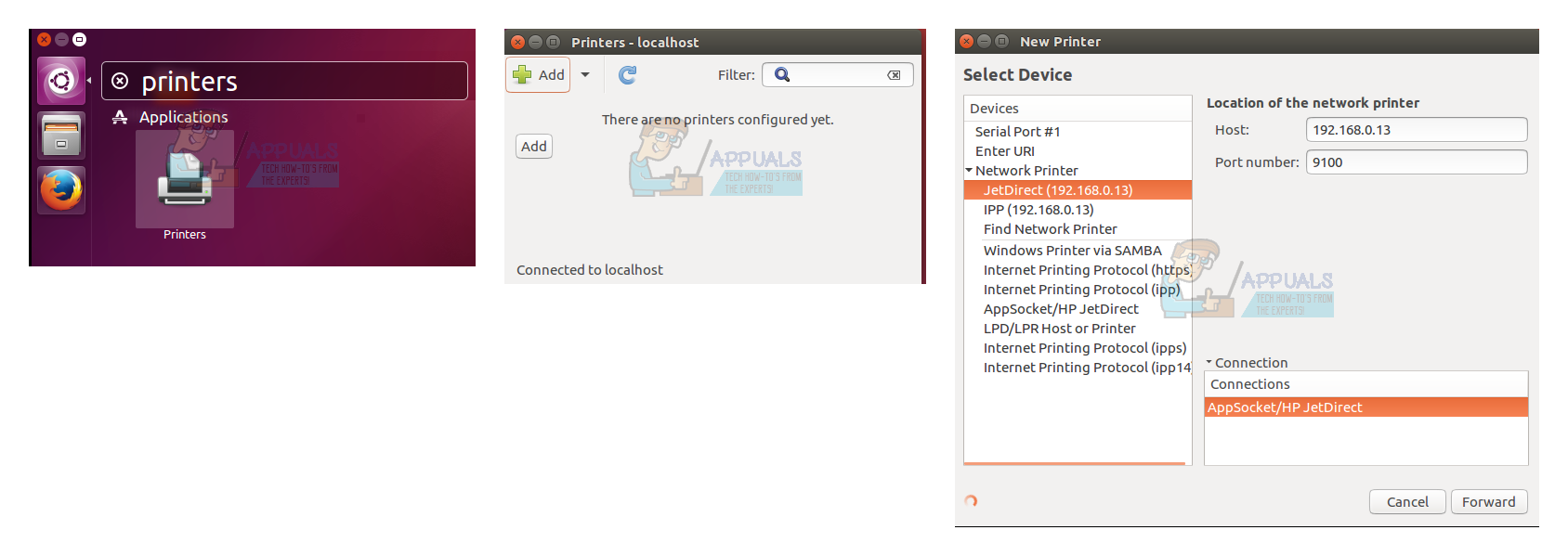How to Install Wireless Printers on Ubuntu 16.04
Ubuntu and the various other graphical versions that Canonical Ltd. supports allow you to easily add wireless printers through a simple series of button presses. Drivers for said printers are already included with the system software. If your printer came with a driver CD or instructions to download drivers, then you more than likely won’t need them.
Make sure that your wireless printer is already switched on and sending a signal before continuing. The steps needed to ensure this are beyond the scope of Ubuntu itself. Follow the manufacturer’s directions in doing so.
Installing a Wireless Printer
Select the search function on the Unity Dash in Ubuntu and then type in printers. Select the Printers option and then click on the Add button, which should feature a green plus sign in it unless you have a custom theme installed. In the “New Printer” dialog box that comes up, you will see a drop down list in the left hand corner. Select the black triangle next to “Network Printer” to expand the menu. Then select Find Network Printer with your mouse cursor or touchscreen interface.

In the lower left-hand corner, you will see a rotating icon indicating that the Linux kernel is attempting to find a wireless printer. This process should take around 10-20 seconds, so if nothing happens immediately, then the system likely hasn’t hung.
Eventually the printer you’ve turned on will appear in the top of the Network Printer drop list, above the Find Network Printer option. Select the “IPP network printer via DNS-SD” option in the connection list on the right corner of the window above the forward option. Click on forward, and a notification box will come up to let you know that Ubuntu is searching for drivers. You will then be given a list of Installable Options, which depend on your model of printer. You may find it best to ignore these and simply click on Forward once again.

You’ll be asked to assign a name to the printer, though you can simply accept the default suggestions based on the specific model of the printer you connected. Click on ‘Apply,’ and then Ubuntu will inquire if you’d like to print a test page. Select the ‘Print Test Page’ button to initiate a test print, ensuring your printer is functioning correctly. In the majority of situations, it should be.